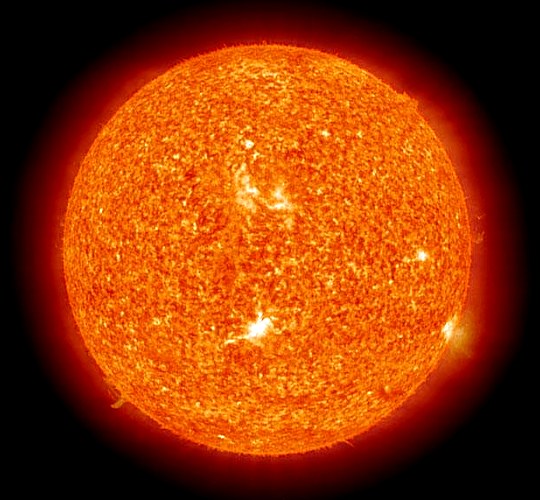
This false-color image from the Solar and Heliospheric
Observatory (SOHO) shows extreme UV light which can't
reach Earth's surface. The bright area at lower
center was the site of a solar flare.
| Physical Properties | ||
| Diameter | 1,392,530 km | = 109 Earth diameters |
| Radius | 696,265 km | |
| Mass | 1.98843 x 1030 kg | = 332,946 Earth masses |
| Mean density | 1.41 g/cm3 | |
| Rotational period | 25.38 days at equator to 35 days at poles | |
| Gravity at visible surface | 273 m/s2 | |
| Escape speed | 618 km/s | from visible surface |
| Visual magnitude (Vo) | -26.8 | as seen from Earth |
| Mean surface temperature | 6000°C | |
| Composition | ||
| Hydrogen | 92. | 1% |
| Helium | 7. | 8% |
| Oxygen | 0. | 061% |
| Carbon | 0. | 030% |
| Nitrogen | 0. | 0084% |
| Neon | 0. | 0076% |
| Iron | 0. | 0037% |
| Silicon | 0. | 0031% |
| Magnesium | 0. | 0024% |
| Sulfur | 0. | 0015% |
| Other | 0. | 0015% |
 To my Space and Science home page
for more about the Solar System
To my Space and Science home page
for more about the Solar System
Jeff Root
September 4, 2003